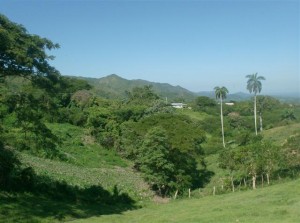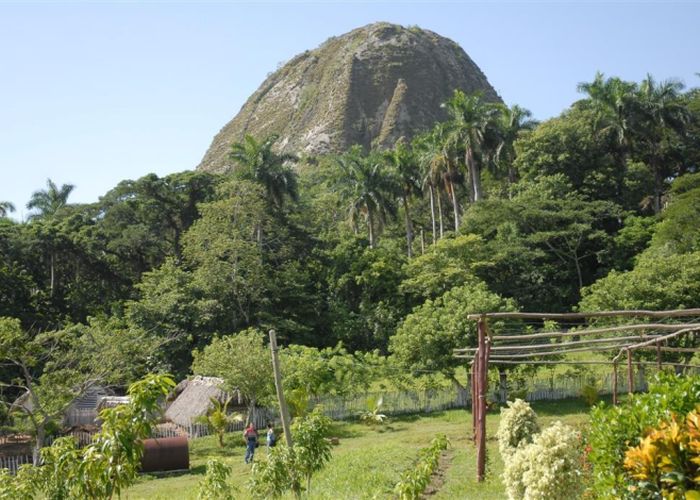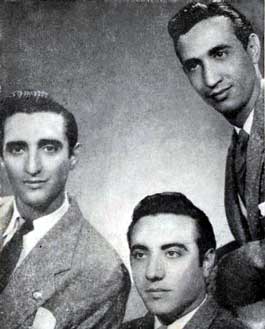 CENTRAL REGION OF CUBA: HIGHEST PEAK IN THE ESCAMBRAY MOUNTAINS.
CENTRAL REGION OF CUBA: HIGHEST PEAK IN THE ESCAMBRAY MOUNTAINS.
The Escambray Mountains are located in the south-central region of the island in the provinces of Sancti Spíritus, Cienfuegos and Villa Clara, extending about 80 kilometers (50 mi) from east to west, and 80 kilometers (50 mi) from north to south. Their highest peak, Pico San Juan, rises to 960 m (3,150 ft) above sea level. The Escambray range is divided into two sections by the Agabama River. The western part is called the Guamuhaya Mountains, and the eastern part, raising between Trinidad and Sancti Spiritus, is best known as Sierra de Sancti Spíritus. After Pico San Juan, the highest points are Caballete de Casas, Gavilanes, Loma de Banao, Caja de Agua, and Pico Tuerto.
Only a few coffee farmers living in the area when President Fulgencio Batista ordered the construction of a sanatorium for tuberculosis patients in 1954. There are rumors that his wife Martha was fighting this disease and once there he loved the place. As a result , she convinced Batista to build him a “cottage” in the area too . After the Cuban Revolution, the hospital became a school since the mid ’70s he returned a similar to a specialized rehabilitation therapies and special hotel use. The Kurhotel is also famous for its vast collection of original pieces of Cuban art. Spread over 210 rooms , lobbies and hallways , nearly 800 pieces of art from the most famous Cuban painters of all time can be found.
University Mountain , one of the co-host Marta Abreu Central University of Las Villas , built in the ’80s. Because of its relatively easy connection to the city of Trinidad and the beaches of the Ancon peninsula , a couple of hotels and a tourist village have been built .
Topes de Collantes is a nature reserve park established in the south-eastern ranges of Escambray Mountains, protecting and showcasing caves, rivers, waterfalls, and canyons. The Valley de los Ingenios is developed at the south-eastern foot of the mountains, and is a UNESCO World Heritage Site.
The coffee plantations on the Manicaragua slopes of the Escambray mountains produce coffee beans that are considered to have an “unparalleled aroma”. The tobacco grown on the lower planes, El Hoyo de Manicaragua, is used by the cigar factory of Manicaragua City.
The earliest inhabitants, Siboneyes tribesmen, called their home, rather immodestly, Manicaragua, the Arawak language for “The Land of the Brave”.
The mountains were the theater of the War between the Castro Government troops and opposition forces, must of them coming from inside the revolutionary movement itself, people that thought they haven’t fought against dictator Batista to implant another dictatorship as happened with the control of the nation by the Castro Brothers. A fight of brothers vs. brothers who produced thousand of deaths and wounded and thousands in jail. Something that shouldn’t ever happen again.
 REGIÓN CENTRAL DE CUBA: EL PICO MÁS ALTO DE LAS MONTAÑAS DE ESCAMBRAY.
REGIÓN CENTRAL DE CUBA: EL PICO MÁS ALTO DE LAS MONTAÑAS DE ESCAMBRAY.
Las montañas Escambray están ubicadas en la región centro-sur de la isla en las provincias de Sancti Spíritus, Cienfuegos y Villa Clara, extendiéndose unos 80 kilómetros (50 millas) de este a oeste y 80 kilómetros (50 millas) de norte a sur. . Su pico más alto, Pico San Juan, se eleva a 960 m (3,150 pies) sobre el nivel del mar. La gama Escambray está dividida en dos secciones por el río Agabama. La parte occidental se llama las montañas Guamuhaya, y la parte oriental, que se eleva entre Trinidad y Sancti Spíritus, es mejor conocida como Sierra de Sancti Spíritus. Después de Pico San Juan, los puntos más altos son Caballete de Casas, Gavilanes, Loma de Banao, Caja de Agua y Pico Tuerto.
Solo unos pocos cafetaleros que viven en el área cuando el presidente Fulgencio Batista ordenó la construcción de un sanatorio para pacientes con tuberculosis en 1954. Hay rumores de que su esposa Martha estaba luchando contra esta enfermedad y, una vez allí, amó el lugar. Como resultado, ella convenció a Batista para que le construyera una “casa de campo” en el área también. Después de la Revolución Cubana, el hospital se convirtió en una escuela desde mediados de los años 70. Regresó a una terapia de rehabilitación especializada y un uso especial en hoteles. El Kurhotel también es famoso por su vasta colección de piezas originales de arte cubano. Repartidas en 210 habitaciones, vestíbulos y pasillos, se pueden encontrar cerca de 800 piezas de arte de los pintores cubanos más famosos de todos los tiempos.
University Mountain, una de las co-anfitrionas de la Universidad Central Marta Abreu de Las Villas, construida en los años 80. Debido a su conexión relativamente fácil con la ciudad de Trinidad y las playas de la península de Ancón, se han construido un par de hoteles y una villa turística.
Topes de Collantes es un parque de reserva natural establecido en las gamas del sudeste de las montañas de Escambray, protegiendo y mostrando cuevas, ríos, cascadas y cañones. El Valle de los Ingenios se desarrolla en el pie sudoriental de las montañas y es un sitio del Patrimonio Mundial de la UNESCO.
Las plantaciones de café en las laderas de Manicaragua en las montañas de Escambray producen granos de café que se considera que tienen un “aroma inigualable”. El tabaco que se cultiva en los planos inferiores, El Hoyo de Manicaragua, es utilizado por la fábrica de cigarros de la ciudad de Manicaragua.
Los primeros habitantes, los miembros de la tribu Siboneyes, llamaron a su hogar, casi inmodestamente, Manicaragua, el idioma arawak para “La tierra de los valientes”.
Las montañas fueron el teatro de la guerra entre las tropas del gobierno de Castro y las fuerzas de oposición, y de ellas procedían del propio movimiento revolucionario, gente que pensaba que no había luchado contra el dictador Batista para implantar otra dictadura como sucedió con el control de la Nación de los hermanos Castro. Una pelea de hermanos contra hermanos que produjeron miles de muertos y heridos y miles en la cárcel. Algo que nunca debería volver a suceder.
Agencies/ Wiki/ Internet Photos/ YouTube/ Arnoldo Varona/ www.TheCubanHistory.com
THE CUBAN HISTORY, HOLLYWOOD.
















